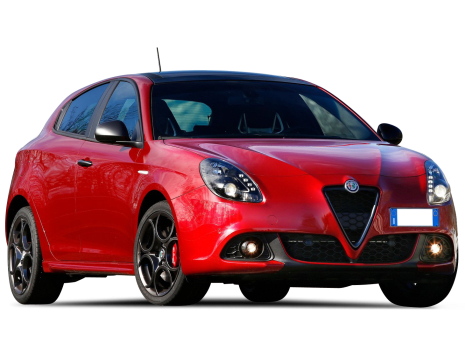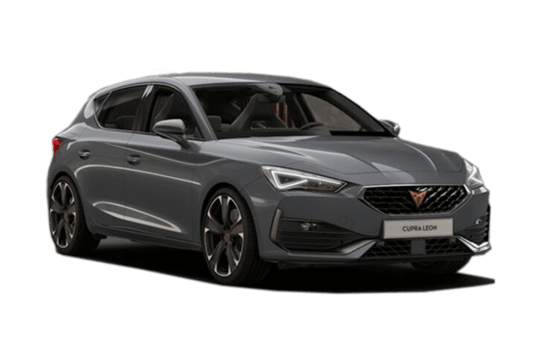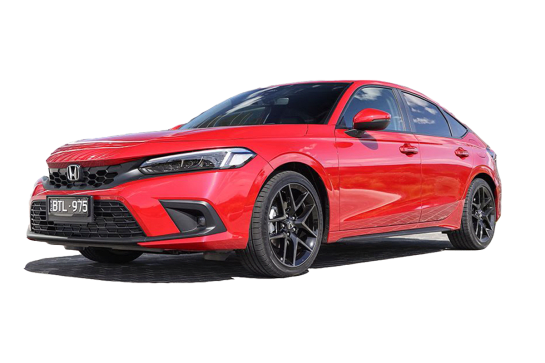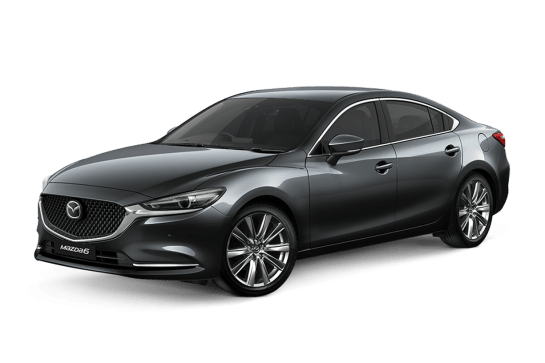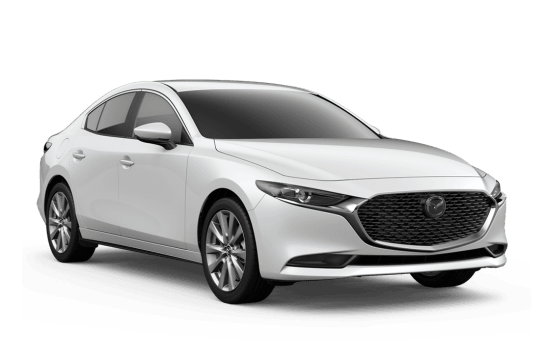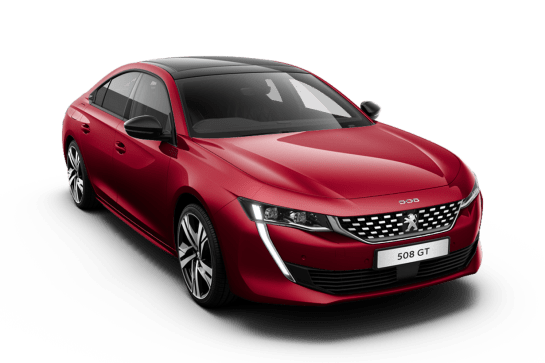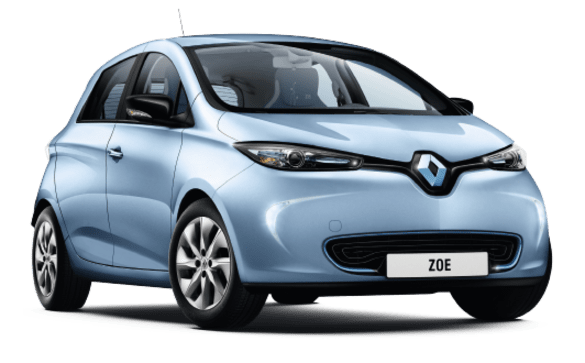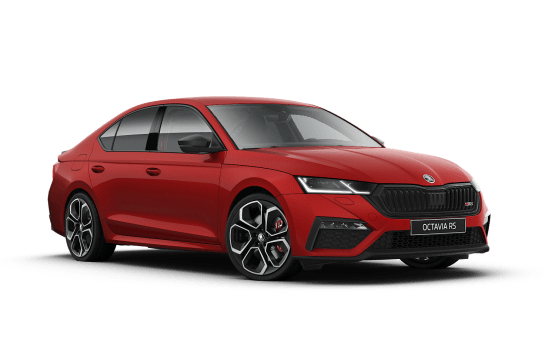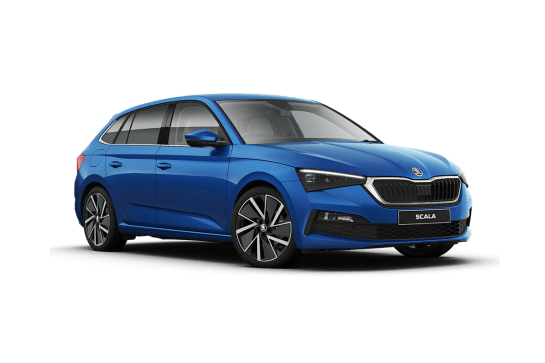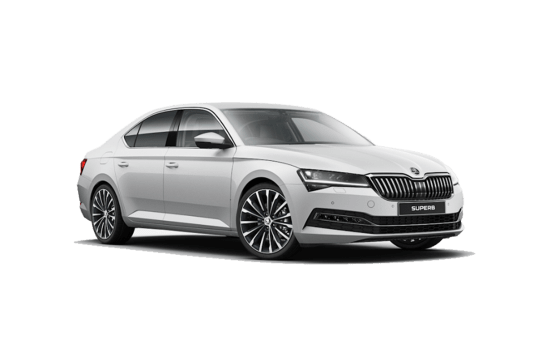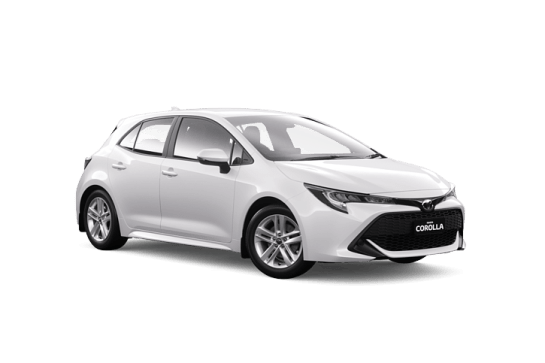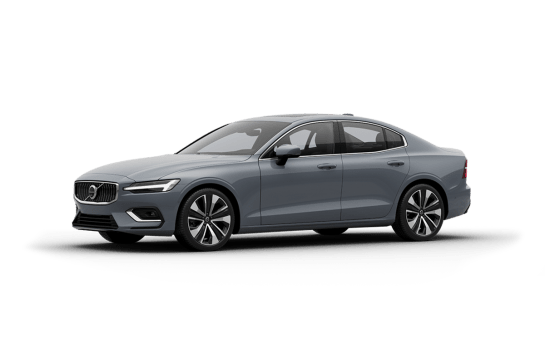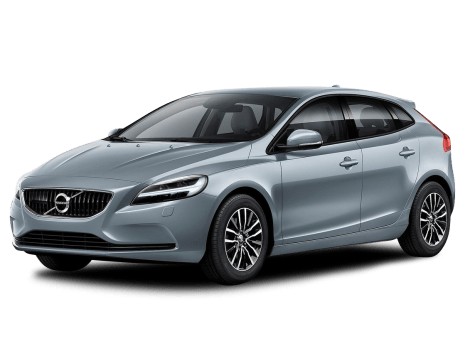
Audi A3 VS Hyundai Ioniq
Audi A3
Likes
- Quality look, quality feel
- Overall balance and driver involvement
- Proves there’s life in sedans and hatches
Dislikes
- Mild-hybrid interesting, but not a game-changer
- Active cruise extra cost in premium version. Should be standard
- Sportback looks don’t flatter the car
Hyundai Ioniq
Likes
- Well-tuned electric drive
- Range is about right
- Excellent energy consumption
Dislikes
- Feels very heavy
- Design won't be for everyone
- Still a little too pricey for mass adoption
Summary
Audi A3
If it was the original BMW 3-Series that invented the compact luxury car market segment all those years ago, then it’s probably fair to claim it was Audi’s A3 franchise that gave rise to the luxury small-hatch category.
On that basis, any new Audi A3 is news but, in the face of the SUV onslaught (including its own stablemate the Q3) the new small Audi has its work cut out for it.
With this update, there’s refreshed styling, a new interior layout and, for the launch of the new cars, two body styles, a conventionally styled sedan and what Audi calls the Sportback; fundamentally a five-door hatchback but with the German brand’s own flair plastered all over it.
Read more on Audi
- 2022 Audi A3 price and features: Australian pricing of new-gen Mercedes-Benz A-Class and BMW 1 Series rival creeps up
- Audi Q2 to be axed! BMW X2, Mini Countryman SUV rival to be discontinued as Audi heads further upmarket
- Audi Australia draws level with Mercedes-Benz, Lexus, Volvo, Jaguar Land Rover and Genesis with new five-year warranty for A1, A3, A4, A5, A6, A7, A8, Q2, Q3, Q5, Q7, Q8 and e-tron
As well as new connectivity and safety tech, the big news is the availability of a mild-hybrid driveline as well as a second powertrain option with more performance from a more conventional layout.
Interestingly, it’s that (mild) hybrid version of the A3 that represents the entry-level variant of the A3. A sign of the times? Perhaps.
As well as the two powertrains, there are two distinct chassis layouts, starting with a front-drive set-up and extending to the option of Audi’s Quattro all-wheel drive (AWD) system.
| Safety rating | |
|---|---|
| Engine Type | 1.5L turbo |
| Fuel Type | Premium Unleaded Petrol |
| Fuel Efficiency | 4.9L/100km |
| Seating | 5 seats |
Hyundai Ioniq
Hyundai's Ioniq range is nothing if not a flex in the face of Toyota.
Sure, Toyota has a dominating position in the Australian market, with its well-received range of hybrid models, but what happens after hybrid? Hyundai takes on the blocky Prius formula with not only a directly competing hybrid model, but a plug-in and a fully electric version, too.
This expansive range is as though Hyundai is trying to demonstrate it's ready for any future, near or far, and guess what, Toyota? Anything you can do; the Korean juggernaut thinks it can do better.
These cars aren't really designed to sell so much as they are offerings for early adopters, but a few years after its launch, with a host of rivals set to take it on, and an entire sub-brand based on the Ioniq just around the corner, is Hyundai's top-spec Ioniq electric worth a look? I took one for a week to find out.
| Safety rating | |
|---|---|
| Engine Type | — |
| Fuel Type | Electric |
| Fuel Efficiency | —L/100km |
| Seating | 5 seats |
Verdict
Audi A37/10
Producing a car that takes the end result beyond appliance status is no given in a world car-park dominated by SUVs. But Audi has, over the last few decades, shown it is very good at doing just that and the latest incarnation of its A3 stalwart backs that up.
While it might take a bit of mental gymnastics to understand why the base model gets the hybrid driveline, or why the more expensive variant costs more to option with adaptive cruise-control, the fact remains these are driver’s cars from a company that understands that concept.
Yes, the A3 is a relatively expensive way to arrive at a compact hatch or sedan, but if you value the journey as much as the destination, it will all make sense.
While the technical aspects of the 35 TFSI are interesting, the extra power and all-weather grip of the AWD 40 TFSI seem to be worth the additional dollars to us. The A3 has always been a sporty alternative, meaning the sportiest version is the one for us.
CarsGuide attended this event as a guest of the manufacturer, with meals provided.
Hyundai Ioniq7.8/10
Just like the Kona EV, Hyundai's Ioniq is still one of the best EV options on the market today. It strikes an excellent balance by offering significantly more range and better energy consumption than the more affordable Nissan Leaf or MG ZS EV, while providing the familiarity of the Hyundai spec and drive experience at a price only a little higher than a top-spec Prius.
Its relatively high score is a product of these factors, but also the way in which its interactivity offers the early adopters the engagement they will be searching for.
Design
Audi A36/10
It’s actually refreshing in 2022 to see a carmaker putting such an effort into something that isn’t an SUV.
That Audi has bothered with two distinct bodies and two equally distinct drivelines is also one for the books, really.
Technically, the mild-hybrid driveline as seen in larger Audis in recent years is probably the highlight of the new A3, and even though it doesn’t compare with a conventional petrol-electric hybrid, it demonstrates Audi’s attention to detail.
The same goes for the digital instruments which allows the driver to tailor the information displayed at any given time. Need a city map more than you need a tachometer at a particular point in you journey? That’s where this technology comes into its own.
Hyundai Ioniq
The Ioniq follows in the footsteps of eco hatches before it. You'll note this car's similarity in profile to the Toyota Prius, both shaped as such to secure low drag figures and therefore better economy and longer range.
While the Ioniq is a little more sedate than the wacky angles of the current Prius, there's no getting around the fact it's not exactly a cool shape. You could say it's interesting, perhaps, in the way it warps the low-drag box to Hyundai's styling cues, but dorky nonetheless. The LED headlights help lift it a little, but the filled-in grille and small 16-inch wheels hardly lend this car extra street cred.
The Ioniq is more a proof of concept for early adopters who care a little less about the way the car looks and a little more about its drivetrain and technology, which is clearly the focus here.
This can be seen in the Ioniq's interior, which has been re-worked for its most recent update. The digital features are impressive, with the floating 10.25-inch screen now totally dominating its dashboard.
I also like how the brand has given the instrument cluster a more modern design, with a cool floating bridge element over the top to eliminate glare, and, as always, Hyundai has made ergonomic use of its excellent switchgear and tidy steering wheel from the i30 and Kona ranges.
The climate unit has lost its tactile dials, replaced by touch-panel controls, and the lack of a transmission under the centre console has allowed plenty of negative space for the brand to play with, in this case a huge storage bay. There are also elements from more recently launched Hyundai models, which help to tidy the centre space up further, like an upright wireless-charging bay and shift-by-wire drive selector, which all looks very modern and neat.
It's a step towards things to come from the newly minted Ioniq sub-brand, which will do a lot more of this stripped-back, space-saving stuff with its next vehicle, the Ioniq 5 SUV. For now, though, the Ioniq is good as a half-step into the future. It's not as outlandish as a Tesla Model 3, for example, and will better suit a buyer looking for something a bit more familiar that still has a futuristic edge.
Practicality
Audi A36/10
Although it’s a compact car externally, clever packaging means there’s ample space inside. Even a tall-ish rear-seat passenger can sit behind a tall-ish driver, and the sculpted rear seat-backs help make that possible.
The only complaint would be that the dark headlining material makes the interior a bit of a cave at times.
Paying more for the 40 TFSI gets you extra cargo nets on the front seat backrests and luggage area, 12-volt sockets in the rear seat and boot. Both versions get floor mats and a centre arm-rest front and rear.
The rear seat in either is split 40/20/40 for a range of possibilities, with the Sportback offering 325 litres (VDA) for the Sportback quattro models, and 380L (VDA) for the 2WD models and its boot capacity is increased to 1145L (VDA) with the rear seat folded flat. The luggage space in the sedan is 390L (VDA) for the quattro AWD version, and a more capacious 425L (VDA) for the FWD model.
Hyundai Ioniq
As mentioned, there's actually quite a lot of space in the Ioniq cabin, and the design has been further stripped back with its most recent updates.
The front seat seems a bit high for a hatch, although ergonomically everything is correct for the driver, with a good amount of adjustability in the seat back and wheel.
The big, bright multimedia touchscreen is easy to use, and the single centrally mounted volume dial is welcome, but I do sorely miss the dials for adjusting fan speed and temperature. Touch-panel controls, to me at least, are always inferior.
As already mentioned, the centre-console area under the climate unit has been almost entirely deleted for the electric variant, granting the driver a little more knee room, and leaving a deep rubberised bay for loose objects, maybe even small bags. This area also houses two 12v power outlets and one USB port. The centre console has been re-worked to include a smart, space-saving upright wireless-charging bay for your phone, the shift-by-wire console, and controls for the heated and ventilated seats. This area also hosts two large bottle holders, and a large centre-console box.
As is usual with Hyundai models, there's also a large bottle holder in the door, alongside a practical bin.
Rear passengers are treated to decent legroom, about on par with what you'd expect in a hatchback. Headroom is a little limited, both for getting in and out, with the descending roofline, so if you have family or friends taller than my 182cm height, they might be less than pleased.
The rear-seat area gets bottle holders in the doors and in the drop-down armrest, although there are no power outlets, just dual adjustable air vents.
The hatch body of the Ioniq makes for a decent boot volume of 357 litres, enough for a large pram or, in the case of my testing, the largest of the CarsGuide luggage cases, with ease. Hyundai gives you a little satchel to tidily store the standard powerpoint to Type 2 charging cable. A Type 2 to Type 2 cable, which you will need to charge at public outlets (up to 7.2kW) is not included.
Price and features
Audi A37/10
These are not bargain basement cars, and with a kick-off price of $46,900 for the A3 35 TFSI Sportback (the hatch version) and $49,400 for the sedan in the same specification, that much is obvious.
The fact is, both the new A3 variants represent a fair mark-up on the previous model. But if you look at the post-Covid car market in a macro sense, you can see the same trend across a lot of brands and a lot of previously entry-level models.
Ante up to the 40 TFSI, and the news is no different with an asking price of $53,500 (Sportback) and $56,000 (sedan).
If the price sounds steep on a per-kilo basis, you need to remember this is an Audi we’re talking about and that price premium is part and parcel of a prestige badge. Don’t like it? Go and buy a VW Golf. That’d be Audi’s advice, anyway.
To justify that viewpoint, the A3 is loaded with some impressive standard kit. The 35 TFSI starts things off with Audi’s vaunted 'Virtual Cockpit', wireless phone charging, voice recognition, Apple CarPlay and Android Auto, remote central locking, paddle shifters, park-assist, sat-nav, a 10.1-inch touchscreen, LED headlights, a multi-function steering wheel, automatic lights and wipers, digital radio, cruise-control and dual-zone climate control.
The 40 TFSI adds a range of aluminium trim pieces and garnishes, Audi’s 'Drive Select' system which allows the driver to choose the characteristic of the dampers, steering response, exhaust sound, throttle response and transmission shift points.
The 40 TFSI also adds sportier front seats, a rear spoiler, body kit, extra courtesy lights around the car and details such as a 12-volt socket in the luggage area.
Options on the base model include a 'Comfort Pack' consisting of adaptive cruise-control, electric front seats, heated front seats, auto dimming headlights, heated and folding mirrors, four-way electric lumbar control and 'Adaptive Drive Assist', including 'Emergency Assist.'
That will set you back $2600, while the 40 TFSI can be enhanced with Audi’s 'Premium Package' which adds those same items as well as aluminium-look trim pieces, a better sound system, head-up instrument display and a memory function for the driver’s seat. That adds $4500 to either the 40 TFSI Sportback or sedan.
Hyundai Ioniq
On the one hand, forking out over $50k for a car which looks like this is a tall order. On the other hand, there is no other electric car that really falls into this price bracket, and when you think about it, it's only a few thousand dollars more than a top-spec Prius.
The aggro never-EV types will argue you can have a very good hot hatch, like say, Hyundai's own i30 N for less, but then this car really is for those early adopters who are after a slice of future drivetrain tech rather than a complete value offering.
In the context of the EVs currently available in our market, the Ioniq shines. Yes, it is more expensive than rivals like the Nissan Leaf or MG ZS EV, but it also offers more range than either of those, at 311km measured to the more accurate WLTP standard.
This is short of Tesla's Model 3 standard range, but also more than $10k more affordable, and as I discovered on my week of testing; 311km, and it really is 311km, is plenty for a predominantly urban commuter to get by with either routine maintenance charging, or a once-a-week stop at a DC charger.
So, value then? As this car has probably the minimum electric range you really want for an Australian city at a price only a little above rivals which fall short, it's in quite the sweet spot.
Oh, you probably want to know about equipment, too. Our Ioniq electric Premium scores familiar equipment from the facelifted Hyundai i30 range, including a 10.25-inch multimedia touchscreen with Apple CarPlay and Android Auto connectivity, built-in sat-nav integrated with charging-station distances, a 7.0-inch digital dash cluster, eight-speaker premium audio system, 16-inch alloy wheels, LED headlights and DRLs, single-zone climate control, leather-appointed interior trim with heated and cooled front seats, a heated steering wheel, auto-dimming rear vision mirror, wireless phone charger, opening sunroof, and keyless entry with push-start ignition.
It's a good array of items, and we'll touch on this car's fully equipped safety suite later. The only notable omissions for now are the lack of a holographic head-up display and the lack of dual-zone climate control.
Under the bonnet
Audi A37/10
While both versions of the A3 use a seven-speed dual-clutch transmission (no manual gearbox will be offered) there’s not a lot of commonality beyond that.
So let’s start with the 35 TFSI’s mild-hybrid running gear. To begin with, mild-hybrid in this sense refers to a starter motor/alternator unit that is linked to a 48-volt battery (the car also has a conventional 12-volt electrical system).
When coasting, the engine can shut off and the starter switches to alternator mode and harvests the otherwise lost energy to charge the 48-volt battery. This 48-volt system also powers the car’s functions when the engine is switched off.
When the car needs to restart (when the traffic-light goes green) the starter kicks in, using that harvested voltage. There’s also a regenerative braking function, saving the car’s actual brakes for more severe stops.
Unlike a 'normal' hybrid system, there’s no electric motor to help drive the car, but Audi claims a potential fuel saving of 0.4 litres per 100km from the set-up. Any benefit will be most noticeable in urban running where the car is speeding up and slowing down regularly.
The rest of the 35 TFSI is technically interesting, too, with the 1.5-litre four-cylinder turbocharged engine featuring cylinder-on-demand where it can shut down individual cylinders during cruise conditions to save fuel.
When firing on all four, however, the engine is good for 110kW of power and 250Nm of torque, figures which have become almost an industry standard in this sized vehicle.
The 40 TFSI, meanwhile, ditches the hybrid gear for a conventional 2.0-litre powerplant with a turbocharger and 140kW of power. Torque is a handy 320Nm and is developed over a wide range of engine speeds (anywhere from 1500 to 4100rpm).
The other big difference is in the driveline. The 35 TFSI is a front-wheel drive platform while the 40 TFSI uses Audi’s Quattro AWD as it applies to Audis with an east-west engine layout.
That means the car behaves as a front-drive vehicle until the electronics decides more power should be sent to the rear wheels. At that point, anything up to 99 per cent of the available torque can be transferred rearwards via an electronically-controlled multi-plate clutch housed at the rear of the car, just in front of the rear axle.
Hyundai Ioniq
The Ioniq electric has a single motor on the front axle producing 100kW/295Nm. It's the least powerful EV in Hyundai's range, but still out-punches cars like the Toyota Prius on raw power. It drives the front wheels via a single reduction-gear transmission, and the Ioniq electric also has re-worked regenerative braking for its most recent update.
This is powered by a huge-for-its-size 38.3kWh lithium-ion battery pack under the floor.
Efficiency
Audi A37/10
With all its cylinder shut-off, hybrid tricks and small capacity, the 1.5-litre engine boasts a 5.0 litres per 100km combined cycle fuel economy figure.
Combined with its 50-litre tank, that’s a potential for 1000km between service-station visits. It’s also commendably close to the numbers you’d expect from a similarly sized vehicle with a turbo-diesel engine.
The more conventional 2.0-litre A3 variant, meanwhile, boasts a still-credible 6.7 litres per 100km for the same test. To counter its greater thirst, Audi has fitted a slightly bigger, 55-litre fuel tank.
The headline act, of course, is the base-model’s highway figure which, thanks to the small capacity engine and its reduced pumping losses at small throttle-openings, can get right down into the low-fives (5.0 litres per 100km) in the real world at real highway speeds.
With a tail-wind, you might even see a number starting with four. This is why you don’t need a diesel engine any longer.
Expect the 40 TFSI to use roughly a litre more across every 100km travelled. And in either case, you are stuck with paying for 95-RON premium unleaded.
Hyundai Ioniq
The huge 38.3kWh battery pack and official combined energy consumption of 15.7kWh/100km, grants the Ioniq electric an impressive 311km (WLTP) range. As already mentioned in the pricing section, this lets the Hyundai electric hatch strike a good balance for urban commuters, however, under our mostly urban testing, it's an even better story.
For context, electric cars are far more efficient when operating in an urban scenario than they are on the open road. This is because they can regenerate energy more often and are less susceptible to losses from drag. The Ioniq has a superb regenerative-braking system, which can be completely customised to the user's preference. Want to drive it with no regen braking (like a normal car)? You can. Want to have the full eco experience, and have the car's motor bring it to a halt even without using the brake pedal, thereby maximising the amount of energy recouped? You can absolutely do that, too.
For most of my week, I stuck the Ioniq in its maximum regenerative setting and was very impressed to find it return an efficiency rating of 12.3kWh/100km. Not only is this number well below its claim, it's by far the most efficient electric car I have driven, and the only one I haven't tried yet is the brand-new MG ZS EV.
Colour me very impressed. The Ioniq charges via the most popular socket, the European Mennekes Type 2 combo. On DC, the Ioniq can charge as fast as 100kW allowing for a charge time of 54 minutes from empty to 80 per cent. On AC, its max charge input is a frustratingly low 7.2kW, making for a charge time of six hours and five minutes (more expensive rivals will charge at 11kW or even the max 22kW), while from a 240v wall outlet (~2.3kW) it will charge in 17 hours and 30 minutes.
My single charge session was at a council-supported clean-energy Tritium charger with a max output on DC of 112kW. It charged my Ioniq from about 35 to 80 per cent in 32 minutes, and cost around $7.
Driving
Audi A38/10
Let’s start with the less powerful 35 TFSI, if only because - even though we know better in 2022 - there’s a temptation to think a 1.5-litre engine will be underdone. The reality, however, is that you’re not going to drive this car and judge it as anything other than very resolved.
While it’s true the peak power of 110kW isn’t startling, it’s the way it’s delivered (along with the 250Nm of torque) that sets the mood here.
Like many late-model Audis, this one has an engine with a fizzy, zingy feel that makes you want to rev it just to hear and feel it. And when you do, it pays off with plenty of flexibility and a sophisticated, refined feel.
Whether the mild hybrid driveline is adding anything to the formula is debatable, because the technology is so seamless you won’t pick what it’s doing other than the engine stop-start function, which is one of the better ones we’ve sampled.
Move from the 35 into the 40 TFSI and you immediately notice the extra power and torque on tap. And although it’s still not a hot-hatch by modern standards, there’s always enough urge to make the 40 TFSI a convincing driver’s car.
Again, the power delivery is the key to it all, making more of what the engine has to offer by actively encouraging you to use it. The seven-speed dual-clutch transmission is your friend here.
The extra driveline functionality of the 40 (namely the AWD system) actually means less than you might imagine in day-to-day life. We didn’t get to drive the car in the wet, but it’s fair to say that those conditions (or a loose, gravel road) are really the only ones likely to make a difference to the way the basic platform feels.
That’s for two reasons; the first being the all-wheel-drive is fundamentally on demand anyway and, secondly, the basic platform is so composed and balanced in the first place, that the Quattro system will spend a lot of its time hiding in the background.
The 40 TFSI also get the selectable drive modes which break with tradition by actually making a difference to the way the car feels.
But the reality is that if you took the best bits of every other setting (Comfort, Dynamic and Efficiency) and loaded them into the Individual button, you’d probably wind up with something very close to what the non-adjustable 35 TFSI offers in the first place.
You have to admire the way Audi has made a front-drive car in the A3 steer, handle and talk to the driver in such a clear, precise way.
Yes, the 40’s selectable modes add another layer to that, but only if you can be bothered. Even more than that, the A3 in either form feels like its ultra-stable and safe, while the levels of feel and feedback give the impression they were decided upon by people who enjoy driving.
Hyundai Ioniq
The Ioniq's familiar Hyundai switchgear makes it largely feel like the brand's i30 from behind the wheel, and this is a very good thing. This car is immediately ergonomic and user friendly, although the seating position is a little high, preventing it from feeling particularly sporty.
The Ioniq emits a pleasant choral tone at low speeds, which enhances the perception you're steering something from the near future. It also helps alert pedestrians nearby, which was one of my pet peeves about the silent Tesla Model 3. The noise is interesting enough that you'll have people peering closely at it to figure out what's going on. It even gets louder as you accelerate, as though the motor is making it and it's not entirely artificial. Cool.
This EV is silky smooth to drive and accelerate. Like other Hyundai electric cars, it doesn't have the unleashed electric torque of a Tesla, but it feels well attuned to driving around in an urban scenario, with viscous acceleration and regenerative braking. I was surprised to discover how heavy it feels, though.
I was expecting it to be heavier than its hybrid or PHEV counterparts but compared to the hybrid Prius I drove only a week or two prior, the electric Ioniq feels obese.
Upon closer examination, the Ioniq electric weighs 200kg more than the Prius, at 1575kg. It doesn't sound outrageous but it's enough to have this little car's suspension wallowing and occasionally crashing over bumps that wouldn't bother its hybrid versions or, indeed, the Prius.
This is perhaps emblematic of the issues facing smaller EVs like this. To get more than 300 kilometres of range, they need a lot of heavy batteries. Manufacturers can better hide this with the existing heft and better suspension travel of SUVs. The Kona EV, for example, feels less hefty than this little hatch.
Regardless, the electric motor dispatches with the Ioniq's weight easily when you really want to accelerate, and while it doesn't provide the hold-on-for-dear-life acceleration of Teslas, it's more than enough for a daily commuter. Unlike the Prius, the Ioniq does genuinely feel pretty sporty in the corners, thanks to steering that's on the heavier side, and a firm, responsive damper tune.
The regenerative braking is particularly good on the Ioniq. Using paddle-shifters usually reserved for changing gears, the Ioniq instead lets you alter the amount of regenerative braking available. Feel like coasting a bit faster? Flick the Regen braking off. Feel like maximising economy and range? Max it out in the drive mode of your choosing, and you can use it as essentially a ‘single pedal' car (you can go or stop by using the throttle alone).
It even has an auto mode, which I found to be pretty intuitive. Paired with a few different display options to let you get superior feedback on how you're tracking with battery usage, it's brilliant, and more electric vehicles should take note.
So, this is an eco-focused electric car that is reasonably engaging to drive if a little heavy. Most importantly for the electric era, it's highly interactive, helping you really understand how your inputs are affecting its battery usage, and how you can better drive it to maximise range.
Safety
Audi A38/10
Possibly the headline (no pun intended) act here is the inclusion of a centre-front airbag. This is something we’ll be seeing a lot more of in the future, particularly in compact cars, where the proximity of the front-seat passengers can lead to head clashes in a side-impact crash.
Beyond that, the Audi has six airbags including side-curtain airbags.
In terms of driver aids, the A3 sets a high bar for its competitors, and with autonomous emergency braking including pedestrian and cyclist recognition, rear-cross-traffic alert, lane-departure assist and a rear-view camera, most bases are covered.
The major omissions are adaptive cruise-control, but that’s available in the 35 TFSI as part of the $2600 Comfort Package, and in the 40 TFSI as part of the $4500 Premium Package.
Yes, the Premium Package also includes heated, memory front seats, a head-up display, improved stereo and the multi-coloured ambient interior lighting (and more) but it does seem strange that it costs more to option up to adaptive cruise in the 40 TFSI than in the base-model.
The A3 scored the full five stars in ANCAP crash testing in 2020.
Hyundai Ioniq
The Ioniq electric comes with the full suite of Hyundai SmartSense safety features, with active items including freeway-speed auto emergency braking (detects vehicles up to 180km/h, detects pedestrians up to 70km/h), lane-keep assist with lane-departure warning, blind-spot monitoring with rear cross traffic alert, adaptive cruise control, driver-attention alert, and auto high-beam assist.
This is backed by the usual stability, brake, and traction systems, as well as seven airbags (the standard dual front, side, and head array, plus a driver's knee) securing the Ioniq a maximum five star ANCAP safety rating dating back to its launch in 2018. It scored highly across all categories.
Ownership
Audi A37/10
Audi recently improved its factory warranty from three years to five years and unlimited kilometres. Any new Audi (including this one) sold after January 1 this year is the beneficiary of that change.
Audi specifies service intervals of 15,000km or 13 months.
There’s also the option of a fixed-price servicing program for the first five years of A3 ownership, and that will cost you $2250, for an annual average of $450.
Hyundai Ioniq
Hyundais are all covered by a competitive five-year and unlimited-kilometre warranty, which includes 12 months of roadside assist. The roadside assist is topped up for an additional 12 months with every genuine service, and the battery pack in EV models like the Ioniq is covered for eight years or 160,000km.
Hyundai's service pricing is amongst the best in the business, and with less moving parts, the electric Ioniq is the cheapest in the range with the first five services for the life of the warranty fixed at just $160 per 12 monthly or 15,000km interval.





